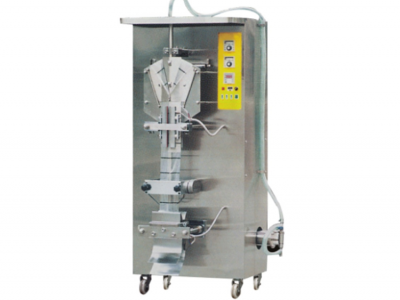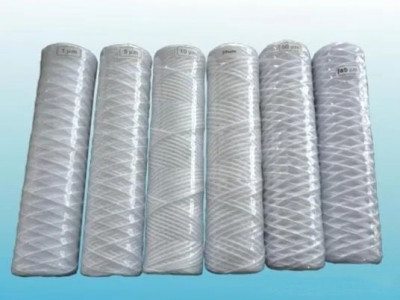Water softener system Product introduction
Soft water treatment system is the use of ion exchange principle, to remove calcium, magnesium and other scale ions in water, usually by the controller, resin tank, salt tank composed of integrated equipment. The controller can choose automatic flushing controller, manual flushing controller. The automatic controller can automatically complete the soft water, backwash, regeneration, positive washing and salt tank automatic replenishment of all the work of the cycle process. Resin tank can choose fiberglass tank, carbon steel tank or stainless steel tank. Salt tank is mainly equipped with salt for resin cell and regeneration.
Water softener system Working Principle
The hardness of water is mainly composed of cations: calcium (Ca2+), magnesium (Mg2+) ions. When the raw water containing hardness ions passes through the ion exchange resin layer, the calcium and magnesium ions in the water are replaced with the sodium ions in the resin, and the resin adsorbs the calcium and magnesium ions while the sodium ions enter into the water, so that the water that flows out from the exchanger is the softened water with the hardness ions removed. As the exchange process continues, the Na+ in the resin is set out all the exchange function is lost, at this time must use Nacl solution to regenerate the resin, the resin adsorption of Ca2+, Mg2+ replacement down, the resin re-adsorption of sodium ions, restored the softening and exchange capacity.
Water softener system Product features
1、High degree of automation, stable water supply conditions.
2、Advanced program control device, accurate and reliable operation, instead of manual operation, completely realize the automatic conversion of all aspects of water treatment.
3、High efficiency and low energy consumption, economic operation cost. Due to the reasonable design of the water softener as a whole, the exchange capacity of the resin can be fully realized, and the equipment adopts jet salt suction instead of salt pump, which reduces the energy consumption.
4, compact structure of the equipment, covers an area of small, saving the infrastructure investment, installation, commissioning, easy to use, operation.
Water softener system Design selection
The selection of soft water treatment system is mainly based on water demand, raw water hardness and applicable occasions.
1) There are various models of system with the same water output, which can be selected according to the actual water consumption.
2) Raw water hardness.
Raw water hardness ≤ 3m-mol / L, you can choose the time control type, according to the maximum amount of water produced by the equipment.
Raw water hardness ≤ 6m-mol / L, according to the table in the maximum capacity of water production equipment selection.
Raw water hardness ≤ 8m-mol / L, according to the average value of the water production capacity of the equipment selection.
Raw water hardness 8 ~ 10m-mol / L, should be calculated according to the minimum capacity of the equipment, or the use of multi-stage system.
Raw water hardness ≥ 10m-mol / L, must choose multi-stage treatment, generally two-stage treatment can meet the requirements.
3) water occasions: if with a hot water boiler or other similar equipment, according to the highest capacity of the equipment to produce water selection; if the water supply to the steam boiler, the boiler evaporation is generally 1.2 times the capacity of the equipment to match the water production.
Water Softener System Technical Specification
Power:220V/50hz
Power:10~35W
Working pressure:0.2~0.5mpa
Working temperature:2~50℃
Inlet water hardness::≤6mmol/L
Output water hardness:≤0.03mmol/L
Operation program: automatic program control
Valve material: high-strength plastic or lead-free copper alloy
Tank material: winding glass fiber reinforced plastic tank, carbon steel internal anti-corrosion, stainless steel.
Control mode: time and flow type or no power hydrodynamic drive type
Arrangement form: single tank or multiple tanks in parallel
Regeneration mode: downstream/counterflow regeneration
Interface: Pipe thread/ABS flange
Ion resin: strong acidic cation exchange resin
Regeneration water consumption:≤2%*water production
Salt consumption:≤160g/L
Scope of application
Mainly used for industrial and civil softened water preparation, such as boiler water supply, air-conditioning system supplementary water, heat exchanger, power plant, chemical industry, textile, biopharmaceuticals, electronics and pure water system pretreatment.
Installation requirements
1) The system needs simple horizontal foundation; it is about 250~450mm away from the wall, and can be arranged by the corners according to the actual situation.
2) Because the equipment itself is light, generally only need to consider the weight of the resin and water installed in the equipment.
3) The inlet and outlet pipes are standard flange or threaded connections, which need to be fixed and supported, and should not be supported by the valve body to prevent stress;
4) Water pressure gauge should be installed on the water inlet pipe. When the equipment is in operation, there is flushing water discharge, set up a floor drain or drain nearby.
5) Brine pipe: brine tank should be as close as possible to the softening tank, the shorter the brine pipe, the better.
6) The drain pipe should not be longer than 6 meters, do not install shut-off valves, the outlet should not be higher than the valve body, the end of the opening to avoid siphoning, the fewer elbows, the better.
7) In the wall near the equipment to be placed in the distribution of electrical outlets, should be equipped with fuses (generally do not install switches), requires good grounding.
Installation details
Installation location selection of water softening equipment
1)The system should be located as close to the drainage as possible.
2)If there is a need for other water treatment facilities, a reserved installation location should be considered.
3)Since salt should be added to the salt tank regularly, the location of salt discharge should be considered.
4) Do not install the equipment within 3 meters from the boiler (softened water outlet and boiler inlet), otherwise the hot water will flow back into the water softener and damage the equipment.
Keep the equipment in an environment where the room temperature is lower than 1°C and higher than 49°C. Keep away from acidic substances and sour gas environments.
Connection of water softening equipment piping
A. The connection of the piping system should be in accordance with the “Construction Standards for Water Supply and Drainage Piping.”
B.Connect the inlet and outlet pipes according to the control caliber.
C. The inlet and outlet pipes should be equipped with manual valves, and bypass valves should be installed between the outlet pipes to facilitate the discharge of residues during the installation and welding process so as not to contaminate the resin; and to facilitate maintenance.
D. Sampling valve should be installed at the outlet, and y-type filter is recommended to be installed in the inlet pipe.
E. Try to shorten the length of the drain pipe (<6 meters), and shall not be installed in all types of valves, in the installation process can only be used PTFE tape sealing.
F. A certain space must be maintained between the drain pipe and the water surface of the drainage channel to avoid siphoning.
G. Independent bracket must be set up between each pipeline, and the gravity and stress of the pipeline are not allowed to be transmitted to the control valve.
Electrical connection of water softening system
A.All electrical connections must comply with electrical construction codes.
B. Confirm that the electrical parameters of the controller are consistent with the power supply.
C. Have independent power outlets.
Installation of water softening system water distributor and center pipe
A. Use PVC glue to bond the center pipe with the water distributor seat.
B. Insert the bonded center pipe into the resin tank.
C. Tighten the water distributor branch pipe on the water distributor seat.
D. After the water distributor installation is completed, the center pipe should stand vertically in the center of the exchange tank, and then cut away the PVC pipe above the plane of the tank opening.
Place the resin tank in the selected location. Glue the center pipe and the lower water distributor firmly, insert the center pipe into the resin tank with the lower water distributor facing downward, the height of the center pipe together with the height of the lower water distributor should be flush with the tank opening. Cut off the excess center tube. Note that the top of the center tube should be smooth and free of burrs. Take out the center tube.
Add the resin to the resin tank without overfilling. Leave space for the backwash space of the resin, the height is about 40%-60% of the height of the resin layer.
The upper watercloth is put over the center tube, or the upper watercloth is fixed on the bottom of the control valve first. Whatever position you place the upper watercloth, make sure that it will not fall down and cause the resin to escape.
Insert the center tube into the bottom of the control valve. Note: The center tube must pass through the O-ring inside and should be screwed into the valve after applying a water-insoluble lubricant to avoid damaging the seal. Fix the upper water distributor on the multi-way valve.
Insert the center tube together with the manifold valve vertically into the resin tank, preferably without tilting. Finally, tighten the multi-valve.




